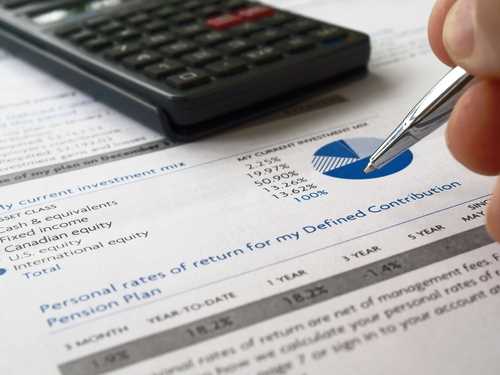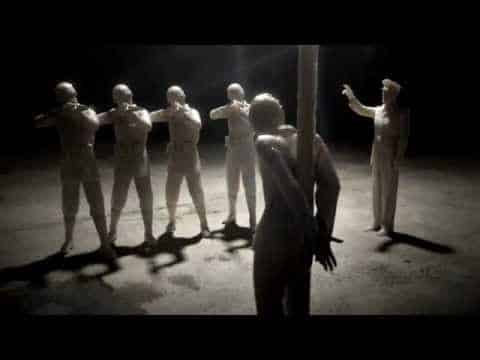In a defined-benefit plan, the employee’s retirement benefits are based on a formula that takes into account, among other things, the number of years they have worked and how much they have been paid. This article covers all you should know about the defined benefit plan.
What Is a Defined Benefit Plan?
A defined-benefit plan is a type of employee benefit plan that pays out money based on things like years of service and average income that have already been decided. Pensions and qualified-benefit plans are called “defined benefit” plans because both the employee and the employer have access to the formula that is used to figure out how much the employee will get in retirement.
Unlike retirement savings accounts, which pay out based on how well investments do, this fund’s value doesn’t change. The law says that an employer has to make up for a shortfall in funding caused by bad investment returns or wrong assumptions and estimates. The company must hire a separate investment manager to handle the investments and risk management for the plan.
How Does a Plan With Defined Benefit Work?
In the past, companies used defined benefit plans to encourage employees to stay with the company for a long time. As more and more people choose less expensive defined contribution plans over more expensive defined benefit plans, defined benefit plans have become much less common. In 1980, 83 percent of private-sector workers could sign up for plans with defined benefits.
In 2018, the benefit was only offered to 17% of private-sector workers. One type of retirement plan that meets the rules set by the Internal Revenue Service is a defined benefit plan. That makes them eligible for perks like not having to pay taxes on investment gains right away and getting a tax break for qualified donations.
Most likely, you know more about 401(k) plans and other qualified retirement plans offered by employers. Unlike 401(k)s, defined benefit plans usually only depend on contributions from the employer to cover costs. However, in rare cases, employees may be forced to make contributions as well.
In contrast to a 401(k), employees usually can’t use their savings whenever they want. Instead, people could choose to get their benefit as a lump sum or as a steady stream of money for the rest of their lives after they reach a certain age set by the plan.
How a Defined Benefit Plan Can Be Paid
You can choose between a lump sum and a steady stream of payments, called an annuity when you retire. The different ways an annuity can be set up make it hard to decide between the two.
#1. One-Time Fee for Life
You’ll get a fixed monthly payment for the rest of your life, and when you die, your beneficiaries won’t get any more money.
#2. A Single Life With a Limited Future
In exchange for a monthly payment, you agree that, after your death, your beneficiaries will get payments for a certain amount of time.
#3. 50/50 Between the Two of Them
After you die, your spouse will continue to get half of your monthly payments from your annuity.
#4. 100 Percent Married With the Assumption That They Will Live
When you die, your surviving spouse will start getting monthly payments from the annuity equal to the full value of the annuity for the rest of their lives.
If you put more limits on your annuity, you can expect your payments to be smaller in the long run. But if you are healthy and expect to live a long time, an annuity may be the best choice. If your health is bad and you only plan to be retired for a short time, you might want to take a lump sum. With a lump sum payment, you can choose whether to invest the money or buy an annuity with it.
Defined Benefit Plan vs Defined Contribution Plan
In the past, many people had a defined benefit plan, especially in unionized industries like the auto industry. Retirement plans that depend on employee contributions, however, have largely taken their place in modern times.
Defined contribution plans are on the rise, while defined benefit plans have dominated the market for decades. Most of the money that goes into a defined benefit plan comes from the employer. On the other hand, most of the money that goes into a defined contribution plan comes from the employees, though many companies offer matching contributions.
The payouts from defined contribution plans are not guaranteed and depend on how much the employee puts in and how well the investments do. This is different from defined benefit plans, which usually guarantee monthly payments or a set lump sum payout based on salary or length of service.
In the defined benefit plan vs defined contribution plan, even though you can make more money by actively managing your retirement portfolio, a defined benefit plan gives you a higher return on your money.
In the defined benefit plan vs defined contribution plan, over half (43%) of all workers in the private sector, state and local governments, and nonprofits have a defined contribution plan instead of a defined benefit plan. However, in the private sector, the number of defined benefit plans has gone down, but 76% of workers in state and local governments are enrolled in a pension plan.
Defined Benefit Plan Advantages
Here are a few things that are bad about defined benefit plans:
#1. Reliable Ways to Get Money
A defined benefit plan guarantees that retirees will get a certain amount of benefits each year.
#2. There Is No Link Between Payments and What the Market Does
No matter how well the investments do, the retirement benefits for employees are guaranteed to stay the same.
#3. The Chance of Spousal Support
After the death of an employee, a guaranteed payment can be kept going for the employee’s surviving spouse.
#4. Tax Breaks for Companies That Pay Their Taxes
When employers put money into defined benefit plans, they can get a tax break.
#5. Better Remembering
Employees in defined benefit plans often stay with their employers for a long time so they can get the most out of their retirement benefits.
Disadvantages of Defined Benefit Plans
Among the problems with a defined benefit plan, here are a few:
#1. Nothing to Put Money Into
Workers don’t have much say over where their retirement money goes. The process of getting stock is slow. If a company says that an employee must stay for five years before their compensation is “vested,” and the employee leaves after only three, the employee loses any compensation that was “vested.”
#2. Move Around Less
When an employee changes jobs, cash balance plans may make it easier to move money from one plan to another. You will still get the rest of your retirement benefits even though this happened. Just make sure to keep track of all the ways you make money.
#3. You Can’t Get a Bigger Reward
The way the benefit formula works means that an employee can’t do anything to increase his or her retirement income. Employees can get more out of their defined contribution plans if they invest more aggressively and put more money into them.
#4. Costs a Lot to Keep Up
Employers have to pay more for a defined benefit plan than for a defined contribution plan because it guarantees payments no matter how the market is doing.
Is 401k a Defined Benefit Plan
In a Profit Sharing Plan or Stock Bonus Plan, the amount given each year is either written into the plan or set by the employer (out of profits or otherwise). The plan has a formula for how the annual contribution will be split among the people who take part. Several profit-sharing and stock incentive plans offer the 401(k) plan as a choice.
The 401k plan is an example of a defined contribution benefit plan that can be cash or deferred. Workers could ask their employer to put money into their 401(k) plan before taxes instead of giving them the money right away. In some situations, the company may match the donation. Money limits the amount that an employee can choose to defer each year. If there are limits, an employer must tell their employees about them.
In the defined benefit plan, participants in a 401k plan take charge of their retirement income by donating a portion of their pay and, in many cases, making their own investment decisions. Before the end of the business tax year, you need to set up a plan to contribute for that year. A SEP IRA, on the other hand, can be set up right up until taxes are due. Since the strategy is made to fit your needs, you don’t have to do much to manage it.
Profit-sharing contributions must be the same amount for both the owner and the owner’s spouse. If you open the account and put money into it by December 31, you will get a tax break for the whole year.
Definable Benefit Plan Varieties
There are many kinds of defined benefit programs. The following are:
#1. Pensions
Employees usually have to work for an employer for a certain number of years before they can get a pension. Depending on the pension plan, an employee is “vested” when they have worked for the company for the required number of years. A worker can become 20% vested in their pension after only one year of work. This means that they are entitled to receive 20% of the full pension when they retire.
#2. Plans With a Cash Value
Participants in a cash balance plan don’t get paid every month but instead, get a lump sum when they retire or leave the company. Because of this, many people think of them as a mix between a 401(k) and a traditional pension. Unlike pension plans, cash balance plans usually calculate benefits based on the total number of years you worked for a company, not just your last or best year. This can mean that some employees’ benefits will be cut.
What Is in a Defined Benefit Plan?
A defined benefit plan will pay you a set amount each month when you retire. This guaranteed benefit could be written into the plan as a specific amount, like $100 a month when the worker retires.
What Is the Difference Between a 401(K) And a Defined Benefit Plan?
A 401(k) is an example of a defined contribution plan, which is a way for employees and, in some cases, employers to save for retirement. In a defined benefit plan, on the other hand, the company takes on all investment risk and promises an employee a certain amount when they retire.
What Is the Difference Between Defined Benefit Plans and Defined Contribution Plans?
The benefits they promise are the main difference between the two plans. In a defined benefit plan (like APERS), the amount of money you will get when you retire is set in stone. In a defined contribution plan, the only things that can change are how much an employer and an employee put into a retirement account.
Up to a certain level, the Pension Benefit Guaranty Corporation’s insurance covers the benefits in most traditional defined benefit plans (PBGC). In a defined contribution plan, the amount of the promised retirement benefit is not set.
What Is the Meaning of “Defined Benefit Pension Plan”?
A defined-benefit plan is the most common type of pension. It guarantees that you’ll get a certain amount of money when you retire. In a nutshell, defined benefit plans give you a steady flow of money for the rest of your life. Because of this, DB pensions are sometimes compared to handcuffs that cost a lot of money.
What Is an Example of a Defined Benefit Pension?
For example, a pension plan for a retiree with 30 years of service could pay $150 per month for each year of service. The worker would get $4,500 a month from the plan when he or she retired.
What Is the Advantage of a Defined Benefit Pension?
A defined-benefit plan gives retirees a steady flow of payments for as long as they live. Each employee is guaranteed a set amount of money from their employer when they retire. This amount is based on their income and the number of years of service.
With a defined benefit plan, you are sure to get the same amount of money when you retire. Many employees like this kind of plan because it gives them the security of a guaranteed benefit. Compared to defined contribution plans, defined benefit plans allow for bigger annual contributions (and deductions) from the company’s bottom line.
Conclusion
A defined benefit plan can pay out all at once or on a regular schedule, like an annuity. Since it is up to the employer to make investment decisions and manage the plan’s investments, all investment and planning risks fall on the employer. But if an employee dies, their spouse might be able to get the benefits.
- Pension Plan: Meaning, How It Works & Types
- Cash Balance Pension Plan: Pros & Cons and Withdrawals
- PENSION AND INVESTMENT: Best 2023 Guide
- PENSION VS 401K: Are Pensions a Better Investment than a 401k
- PENSION AND INVESTMENT: A Complete Overview In 2023






